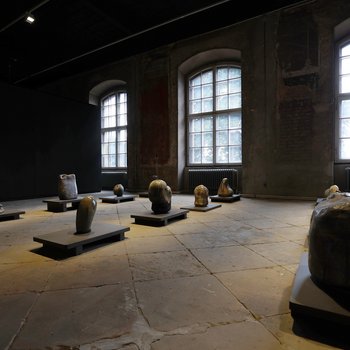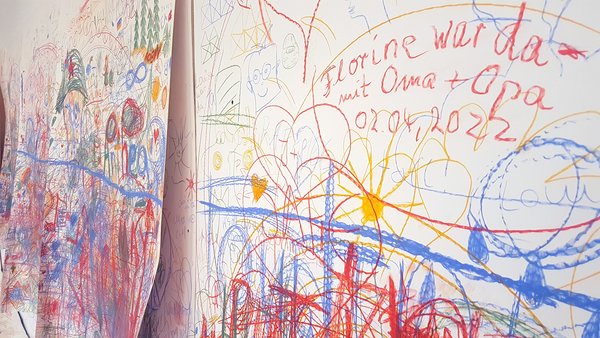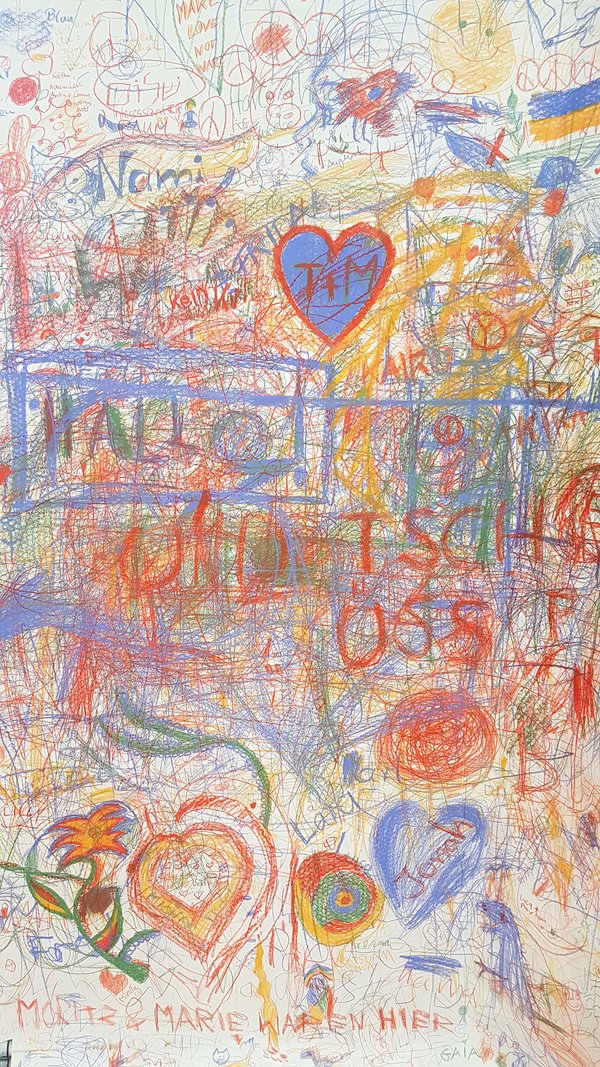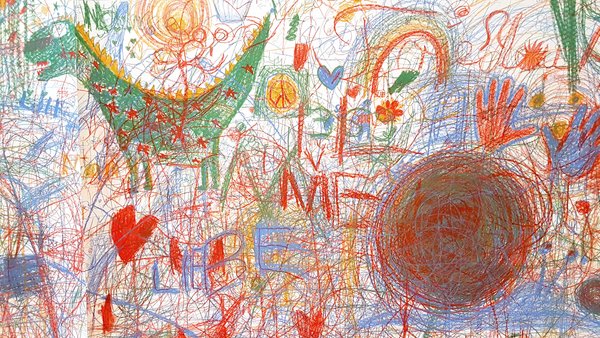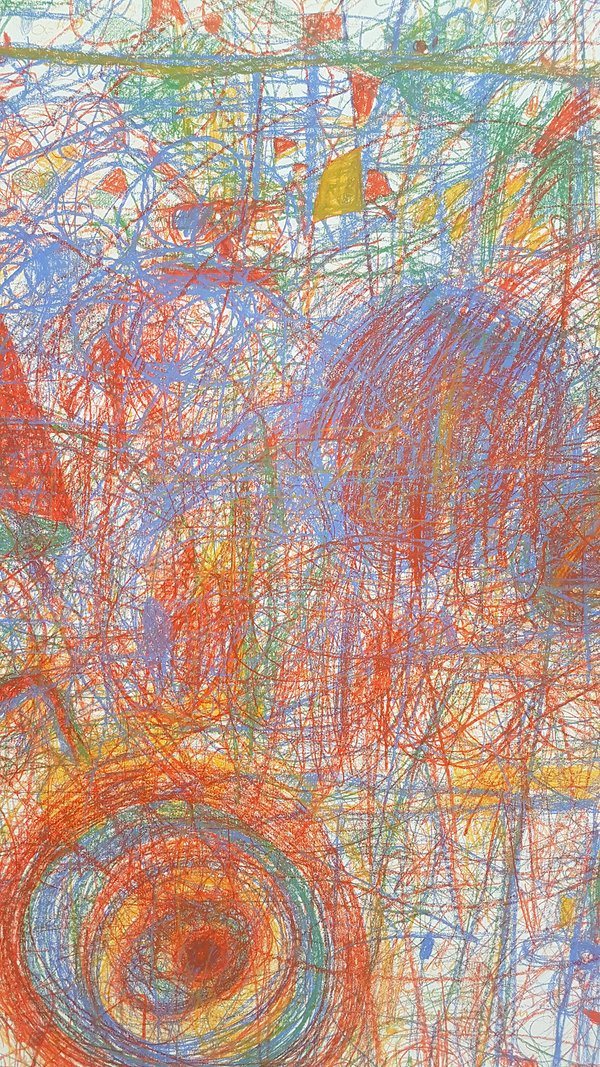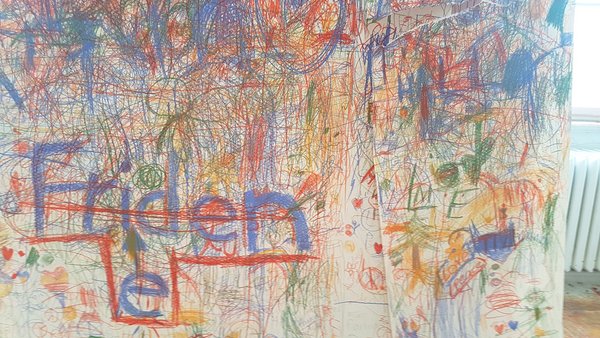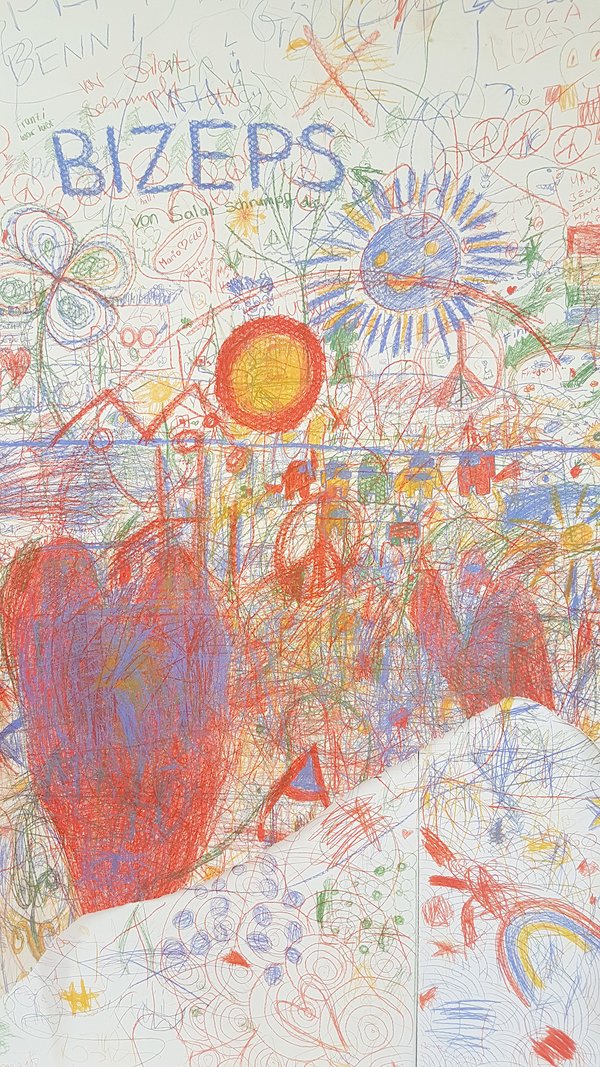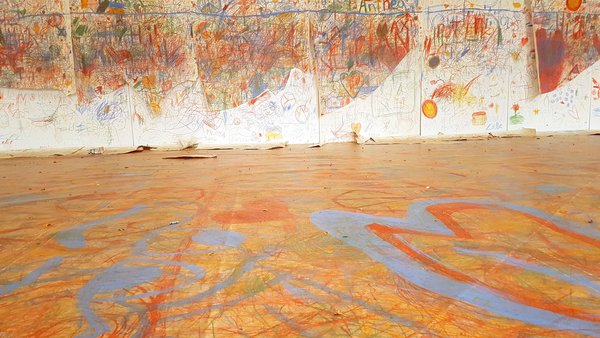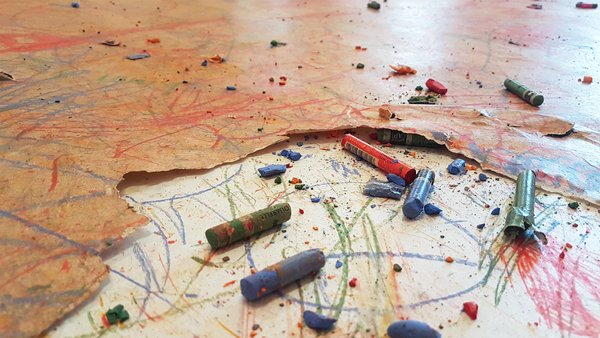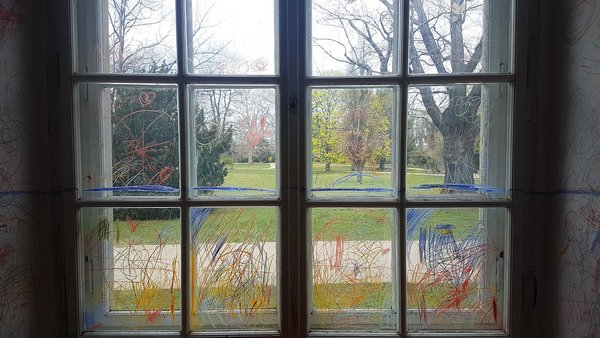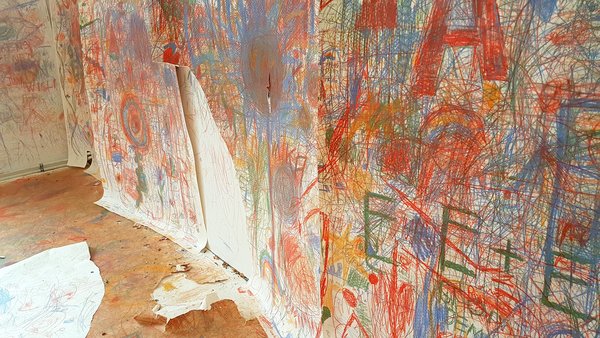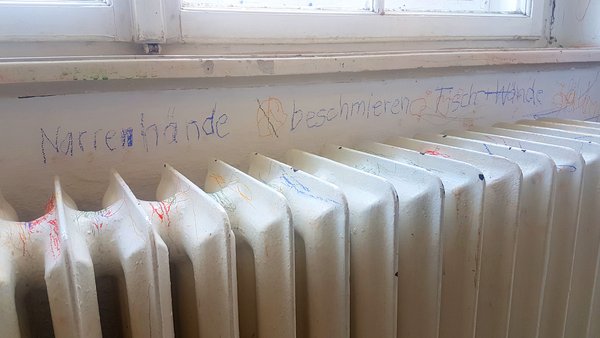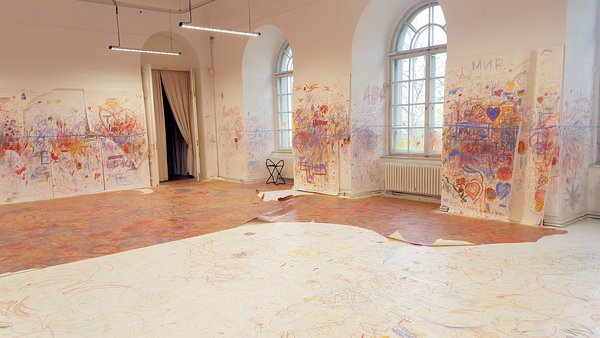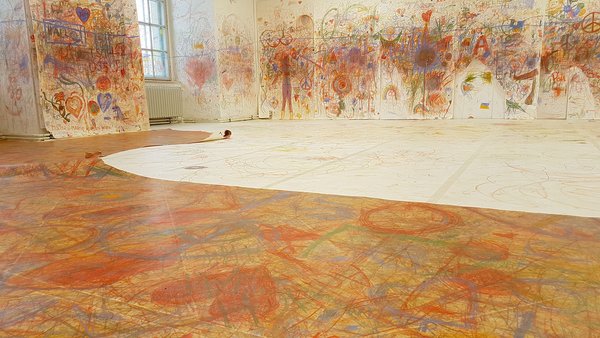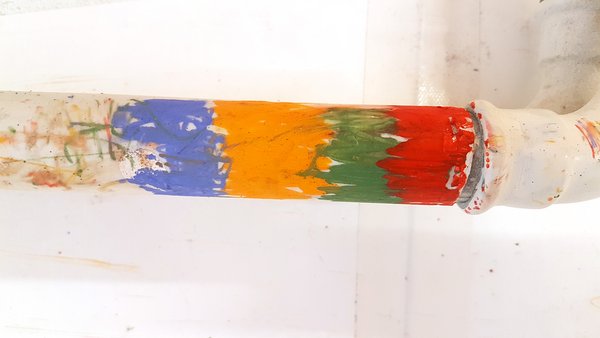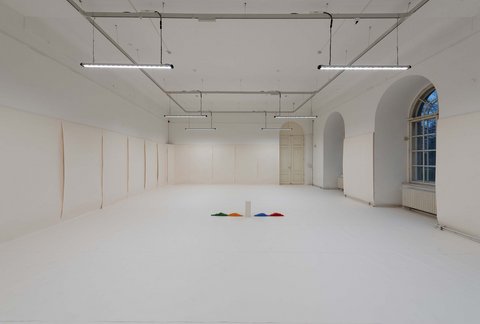
Artourette: It is what it is, 2022
© Japanisches Palais, Staatliche Kunstsammlungen Dresden, Foto: Andreas Diesend
If, in the last few weeks, you have been found scribbling colourful pictures on the wall of a museum in Dresden, then there is a very good chance that you were at the Japanisches Palais – not carrying out an act of criminal damage, but participating in a collective work of art. When the second Children’s Biennale at the museum, on the theme of “Embracing nature”, was extended for a further two months at the end of February, the varied programme of events focusing on people and their relationship to nature was supplemented by the participative piece It is what it is by the Dresden artist Artourette. Having spent their tour of the exhibition relaxing beneath a canopy of thousands of artificial flowers, chasing virtual butterflies and more, visitors entering the last room, which was shrouded in metres of white paper, were offered an opportunity for free expression.

Artourette: It is what it is, 2022
© Japanisches Palais, Staatliche Kunstsammlungen Dresden, Foto: Andreas Diesend
A thousand brightly coloured crayons and what started out as a stack of white sheets of paper gave visitors young and old the chance to step out of their passive role and playfully become an active part of a creative process. This offer was taken up enthusiastically, producing some revealing results. From the moment the first visitors entered, the once clean room underwent a gradual transformation. At first, a sun appeared here, a group of dinosaurs there. Hearts and flowers were followed by peace symbols and slogans. It was not long, of course, before the typical, ubiquitous scribblings of “I was here” and initials popped up, acting as a statement of people’s existence and marking their territory in a manner not unlike the tags left by graffiti artists. And thus the individual drawings began to decorate the walls and floor, at first side by side and later on top of one another.
Over the weeks, all these signs and shapes entered into a visual dialogue with one another and with the visitors, spreading over the room like a kind of graphic network. One day, the resulting large-format abstract piece burst the banks of its designated canvas. Released from the confines of the paper, the wax-suspended pigments then also found their way onto window panes and radiators or, in a few cases, even left the exhibition room in children’s hands, dotting the rest of the building with little colourful squiggles. Meanwhile, the sheets of paper on the floor, by now covered in countless layers of wax and a leathery, shiny brown, started to tear until eventually, the colouring even continued on the back.
Although the piece It is what it is initially comes across as a complete chaos of colours and shapes, the participative process of its creation is open to an empirical interpretation of the touchpoint between humans and the environment. After all, this chaos also offers a visual impression of human society. An insight that ultimately raises some questions: How do we shape our environment together, and in doing so, how do we use the raw materials available to us? What behaviour do we display when those natural resources start to run out? It would also be interesting find out what results Artourette’s participative work produced in other cultures, such as the indigenous peoples who have a completely different understanding of how they deal with space compared to our Western, colonialist civilisation. While It is what it is raises not just these questions, but many others about people’s relationship with nature, the final work in this special exhibition can also be read as an exclamation mark placed at the end of a plea to take greater care of our environment.
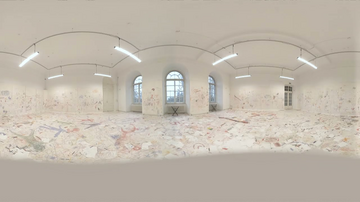
Also of interest:
Marijke van Warmerdam’s work Eiskugel – quite literally an ice ball of ∅ 25 cm – is a modest piece that might have been somewhat simple if it weren’t also slowly melting in the gallery space. Jane Boddy on the tremendous energy put into the production of a clear, carved piece of ice currently on show at the Children’s Biennale "Embracing Nature" at the Japanisches Palais.
![[Translate to English:] Marijke van Warmerdam, Eiskugel, 1998. Photo: SKD, Oliver Killig.](/fileadmin/_processed_/2/5/csm_290321killig030_6a0648dbb8.jpg)
It is one of the most fascinating works at the Children's Biennale: Thijs Biersteker's installation "Wither". Yet the work has a more serious background. The delicate, semi-transparent artificial leaves light up in a rhythm that depicts the deforestation of the rainforest in the Amazon. How does this work? We asked the artist.
![[Translate to English:] Thijs Biersteker, Wither, 2022. Installation at Japanisches Palais, Dresden](/fileadmin/_processed_/a/5/csm_Abb03-wither-Thijs-Biersteker-Dresden_4ca3bb4580.jpg)
The firing of clay is one of the earliest technologies discovered or invented by man. A variety of work featuring ceramics as well as film and images created by Rome Prize winner Benedikt Hipp will be among the exhibits on display as part of the new exhibition “Eppur Si Muove – Und sie bewegt sich doch” at the Japanisches Palais (Japanese Palace), which happens to be the original location of the Porzellansammlung. In the following, Hipp offers insights into how he himself experiences and observes the creation of his ceramics – from collecting clay to the fired object.
